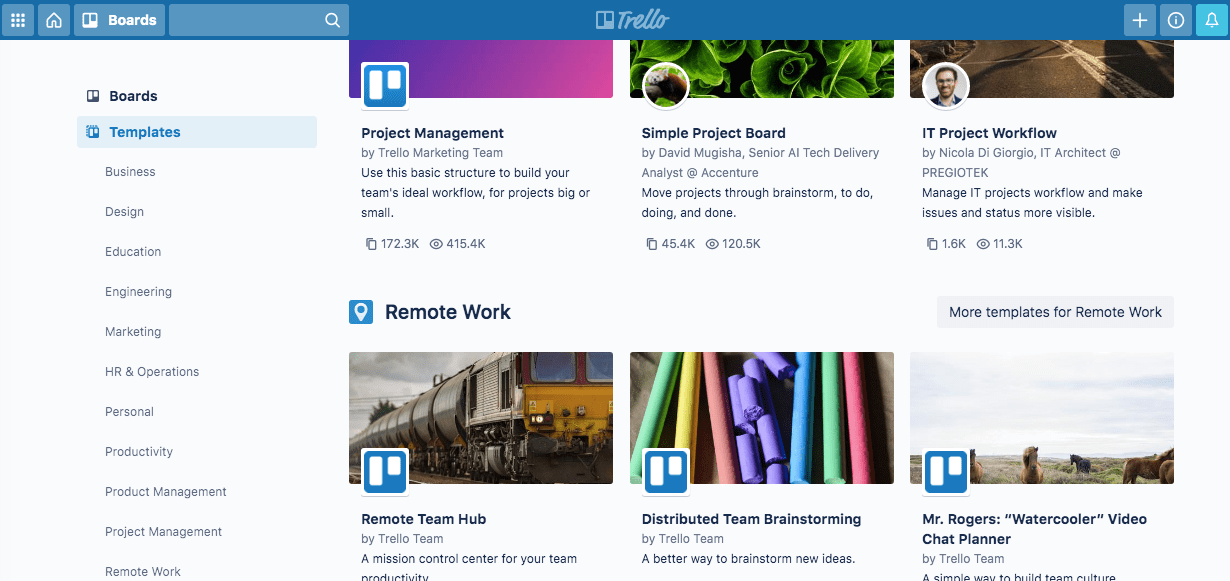
Remote offices and working from home are now a staple of doing business in this lockdown reality. For better or worse, companies need to embrace remote working arrangements due to health, safety, and logistics concerns.
Whether your business operates on a fully-remote or hybrid setup, the biggest challenge is ensuring employee engagement.
Some managers have fallen into the pitfall of assuming they need to micro-manage and run day-long conference meetings to ensure that their team is working. The result are disgruntled managers and employees alike, both chained to their desks but with subpar productivity.
Don't let your employees run themselves ragged in a time when staying healthy is crucial. There are more ways to ensure productivity and engagement than looking over employees' proverbial shoulders when they are working remotely.
Here are a few ideas to get you started.
Provide Context and Define Goals
Oftentimes, we take for granted that our teams understand the company’s goals and where they fit into it. Unfortunately, only 40% actually know what the goals of the company are. 60% of your employees are investing time and effort into doing their jobs but possibly aren’t contributing to the company focus.
This is a bigger issue for remote employees, where sometimes, the adage “out of sight, out of mind” applies. Make sure your employees know what your business’ long-term and short-term goals are.
Help your team understand where they fit into those goals: top-down memos can be lost in translation, but sitting down and talking to your team about how they contribute directly to the goals can help them focus their efforts.
Encourage Communication
Talk is cheap. But don’t just talk--communicate. Communicate company goals, communicate weekly targets, communicate roadblocks and solutions. Communication is listening and sharing, and it is important to make sure that there are open lines between all layers of your organization.
In a time when people can’t see each other regularly and nonverbal communication is challenging, ensuring approachable channels are available is important in engaging employees. Video conferencing calls are good for regular catch-ups. Chat programs might be seen as a distraction, but for remote workers, the casual, conversational vibe of a Slack channel or Google hangout is more conducive to group discussions.
It’s also important to provide more frequent feedback for employees working remotely. It may have been a practice that is relegated to annual performance reviews in more traditional settings, but when you don’t see your team on a daily basis, it’s easy to drift away and be detached from them. Frequent and regular one-on-one meetings, no matter how quick, can help keep working relationships healthy.
Provide the Tools They Need
In the past, working from home has meant limited access to the information and tools that you need to accomplish your tasks. But office tools are more than just word processing, spreadsheet, and presentation applications when remote offices are concerned.
While access to these are important (as well as appropriate training, if alternatives are used), other tools to collaborate and facilitate work is also important. With the necessary popularity of remote work now, this is a great time to look into tools that can help you facilitate remote collaboration.
Make sure your team is able to track tasks and projects with management tools such as Trello or Asana. Transparency on where the project is going helps with everyone’s engagement and workflow.

Trello task management board templates
Time management and remote attendance taking can help employees feel in control of their time, as well as providing important routine tasks to start off a work day.
Remote attendance tracking dashboard
File sharing platforms are also important when it comes to remote employees coordinating their deliverables. Dropbox or Google Drive are popular solutions, even allowing employees to work on one file at the same time in the cloud.

Dropbox filesharing service
Don’t underestimate setting up an Intranet site or something super simple on Google Sites or similar. Making sure that employees have access to the information that they need to do their work is important to ensure work does not stall, and they don’t waste time hunting for information.
Update Company Culture With Remote Work in Mind
It is an unfortunate fact that culturally, “working from home” was seen as an excuse to slack off in the past. No matter how well-meaning, employees have faced challenges in getting their jobs done when working remotely, and over time this has bled out into these regrettable beliefs.
But a company culture that is designed with remote employees in mind will see more success in empowering their employees to contribute more actively to company goals. Availability of tools and open communication is one thing, but actively encouraging remote collaboration and team building is important.
Some businesses arrange coworking spaces in major hubs so employees who live near each other can collaborate in person. Others highlight the remote pockets of the organization by highlighting remote teams during meetings and allowing them to present first rather than a traditional top-down approach.
Keeping remote offices in mind when planning benefits, rewards, and recognition to employees can also emphasize how seriously your company is taking remote offices. Take a look at some of these ideas some companies have started implementing:
- Electricity allowances to offset employees’ higher electricity consumption due to working completely from home
- Sending quality office supplies to round out their home office
- Allowances for employees purchasing desks or monitors to ensure better productivity
- Sending catered or delivered food to employees during company special occasions or during employees’ birthdays
Letting employees see that your company is looking out for them even if they’re not in the office pays you back by empowering and encouraging them to be more efficient at their jobs.
Remember to Review and Measure Progress
The above ideas can help you increase employee engagement, but without a way to measure progress, it will be difficult to keep them going for long, especially for programs that cost money.
Tracking employees’ Net Promoter Scores as well as taking pulse surveys can point out to you where to improve and where you are doing well in terms of engaging your employees. It can help you realign your resources to activities and initiatives that work better for your remote employees.
Conclusion
Don't fall into outdated assumptions that remote employees have to be micro-managed to ensure they get their jobs done. Focus on building an empowered workforce that has the right tools, information, and targets at hand.
Remember to:
- Provide context and define goals for your employees
- Encourage communication across teams and all levels
- Provide the tools and information access your employees need
- Update your company culture with remote work in mind
- Review and measure progress to track effective initiatives and areas for improvement
If you work on engaging your employees, you won't just survive this lockdown environment: you can come out of this challenging time with an even stronger workforce.
